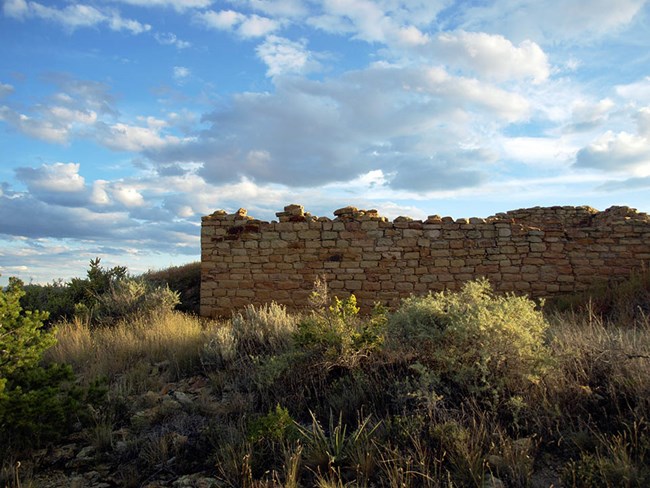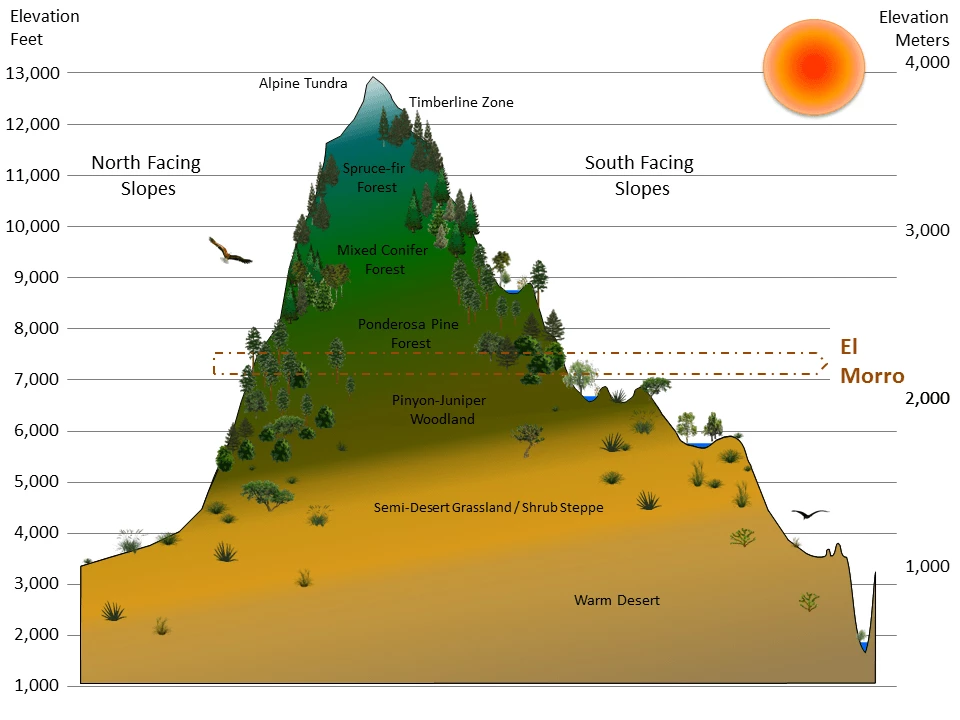
NPS / SCPN
El Morro National Monument encompasses 1040 acres (421 ha) of federal land and 240 acres (97 ha) of private land in western New Mexico. Established in 1906 to preserve cultural resources, the monument features a sandstone monolith, known as Inscription Rock, which bears hundreds of inscriptions of Spanish explorers and early American immigrants and settlers.
The dominant vegetation community in this small park is pinyon-juniper woodlands, with lesser acreages of ponderosa pine-oak forest. Five amphibian, 72 bird, 38 mammal, and 16 reptile species are known to occur within the park.
A natural catchment basin at the base of the cuesta is filled by water runoff from the cliff face and is the only perennial water source in the monument. This pool has served as a vital source of water for humans and animals for centuries.
Select a Park:
Select a Species Category (optional):
Visit NPSpecies for more comprehensive information and advanced search capability. Have a suggestion or comment on this list? Let us know.
Life Zones
El Morro NM ranges in elevation from 7,160 to 7,557 feet (2,183-2,304 m) and lies on the boundary between Pinyon-Juniper Woodland and Ponderosa Pine Forest life zones. Pinyon-Juniper Woodland is much more prevalent then Ponderosa Pine Forest, which is restricted to moister box canyon areas. The monument experiences an average annual precipitation of 13.9 inches (352 mm).

Climate Summary Chart
Charts are an effective way to summarize and graphically represent climate variables. The following chart is based on the diagrams developed for vegetation studies by Walter and Lieth in 1967. Visit our climate page for more information.

Reports & Publications
Inventories are point-in-time surveys that help us learn about the resources in our parks. Information obtained through the Southern Colorado Plateau Network’s inventories of park resources helped to establish a base level of data, which has served as a starting point for our natural resource monitoring.
Source: NPS DataStore Saved Search 3515 (results presented are a subset). To search for additional information, visit the NPS DataStore.
Source: NPS DataStore Saved Search 3471 (results presented are a subset). To search for additional information, visit the NPS DataStore.
Source: NPS DataStore Saved Search 3280 (results presented are a subset). To search for additional information, visit the NPS DataStore.
Last updated: November 6, 2018
